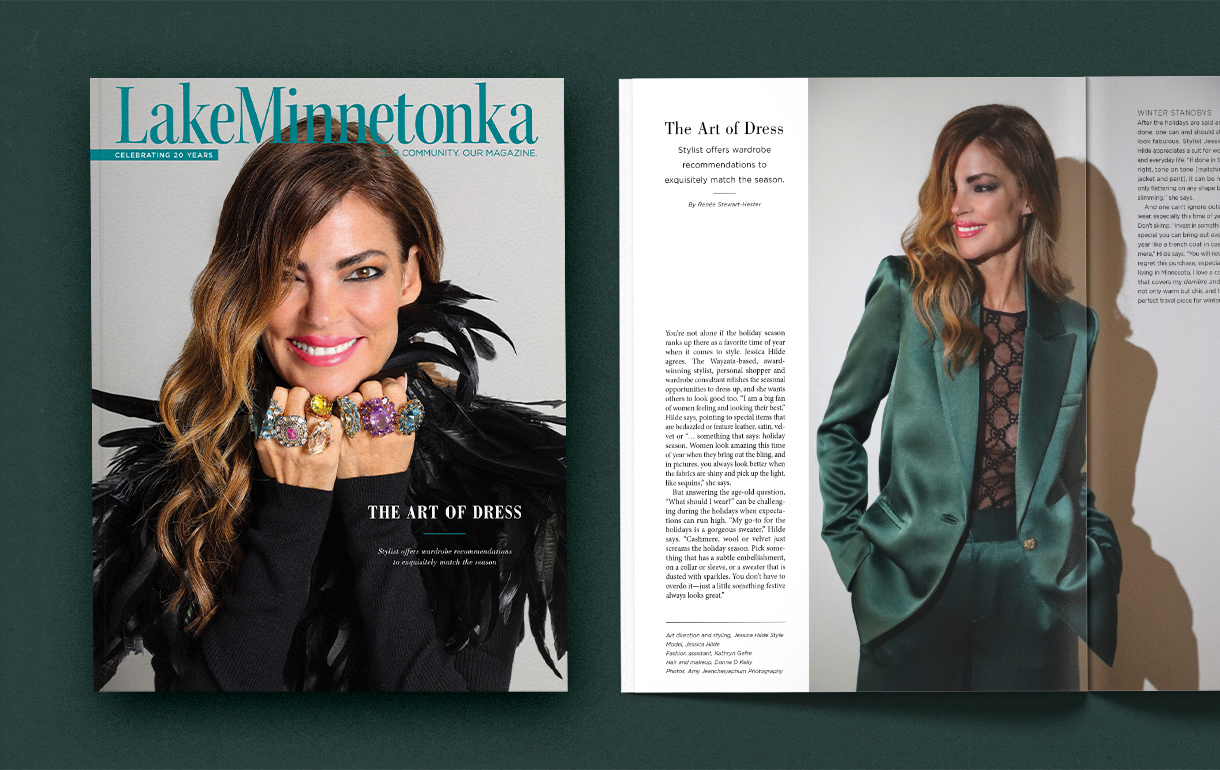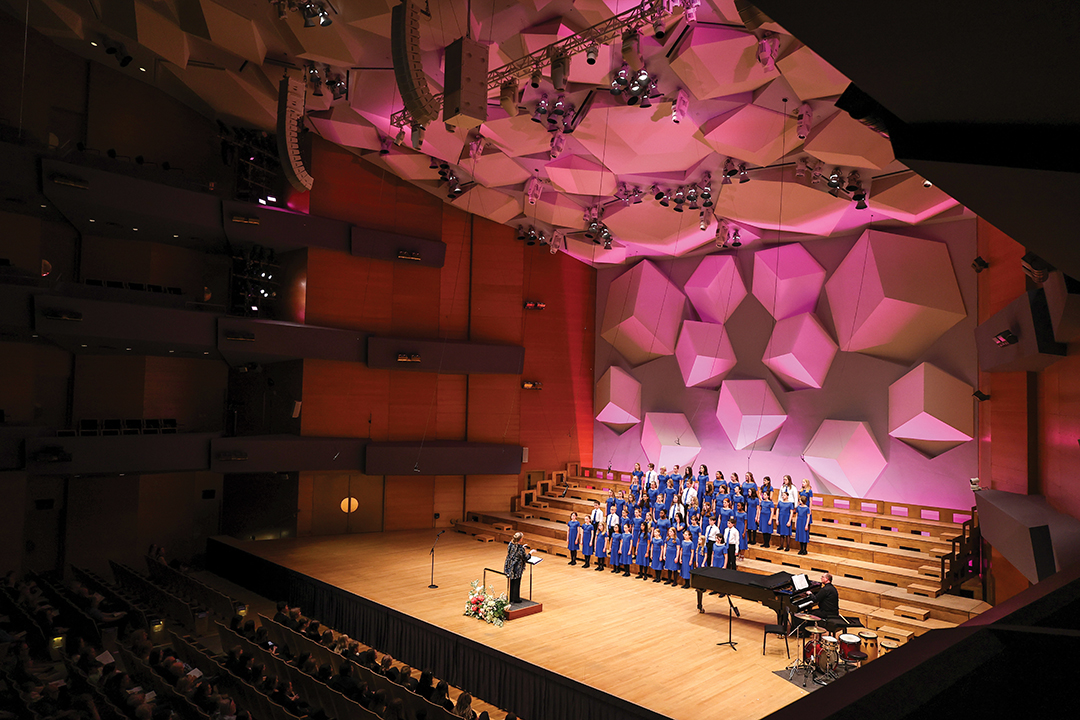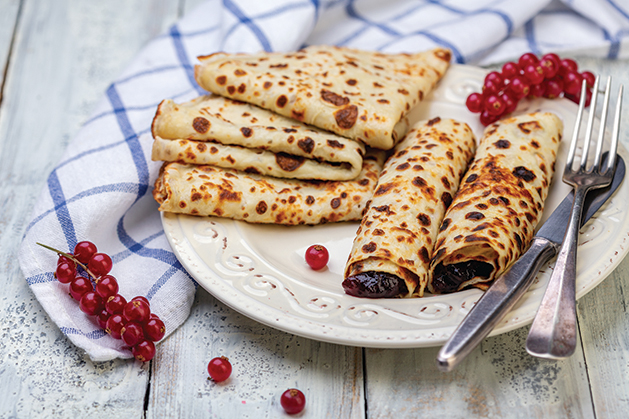
iStock/SMarina
Serve up some North Star State favorites.
The North Star State, the Land of 10,000 Lakes, the Gopher State, the Bread-and-Butter State—though Minnesota has numerous trademarks, its culinary scene is also unlike any other.
We’re no strangers to comfort foods (I’m talking about you, tater tot hotdish!) and easy-to-make meals, but Minnesota also offers unexpected discoveries, such as Indigenous and Asian foods and crave-worthy dishes.
Though our favorite foods may be off the beaten path, these tried-and-true favorites are tasty, home cooked and quintessentially Minnesotan.
Dessert bars: Cut like a brownie with ingredients like a cookie, dessert bars are something special to Minnesota. They can be fruity (lemon and cherry pie bars) or salty (salted caramel or Nut Goodie bars). How about cereal- or peanut butter- based (Scotcheroos or Special K bars)? Find them at school cafeterias, kaffeeklatsches or around dinner tables. The options are truly endless.
Hamm’s beer: Hamm’s—a household name in the 1950s through the 1980s—has been the choice of Minnesotans since after Theodore Hamm first arrived in St. Paul from Germany and had a goal to create a high-quality American brew. Beginning in 1865, Hamm’s has been a staple for Minnesotans —and its resurgence is just beginning. The popular beer is still brewed in its traditional way, according to the Hamm’s Beer website, from the “purest water and the choicest barley malt, grain and hops.”
Hotdish: This traditional dish has a hundred different names, but true Minnesotans only call it by one—hotdish. From church gatherings to family reunions, you betcha—you will see this starch meets meat and vegetable concoction. The options are endless.
Juicy Lucy: First place for the most controversial Minnesota staple goes to the Juicy Lucy with ongoing debates about who first invented the delicious cheese-stuffed burger. Was it Matt’s Bar or the 5-8 Club, each located on Cedar Avenue in Minneapolis? Though we won’t choose a side, Juicy Lucys are a must-try for any visitor or local. Pro tip: Try not to scorch your mouth on the first bite!
Lefse: Potatoes, flour, cream and butter—the simple ingredients make up this traditional Norwegian flatbread, often served with butter, sugar (white or brown—the latter is traditional) and cinnamon. Try it with lingonberry sauce—another Norwegian favorite—or topped with salty foods, including smoked salmon, spiced meat and cheese or onions and mustard. Sweet or savory, the choice is yours.
Pho: Minnesota is home to a large Hmong and Vietnamese community, which has made our great state a hot spot for pho (pronounced “fuh”), a Vietnamese noodle soup with rice noodles, vegetables, spices and meats, similar to the popular Japanese ramen dish. It is a national obsession, and Minnesota is lucky to have several delicious pho spots and varieties. Whether you are craving traditional pho or a modern variation, there’s a bowl for it all.
Polish sausage: Eastern Europeans have been settling in Minnesota since the 1800s, and immigrants brought over an abundance of delicious food and recipes—including polish sausage. You have probably dug into a Kramarczuk polish sausage at a Twins game, but its Minneapolis establishment has been serving polish sausage for over 60 years.
Porketta: Made popular in the Iron Range from Italian immigrant miners, porketta (also known as porchetta) is typically pork roast seasoned with fennel, garlic and other herbs and cooked, mostly slowly, to perfection. Though you’ll find Minnesota’s favorite porketta at the 108-year-old Sunrise Bakery in the Iron Range, there are plenty of delicious options closer to the Metro or in your own kitchen.
Walleye: We are the Land of 10,000 Lakes, and we have the dish to prove it. Walleye is the official state fish, and the most popular fish entrée. It is also the perfect complement to many traditional dishes, including wild rice (see below) or served between two artisan buns as a sandwich.
Wild rice soup: Wild rice has been a staple in Minnesota for hundreds of years, dating back to the traditions of the Anishinaabe (Indigenous tribes including the Odawa, Saulteaux, Ojibwe, Potawatomi, Oji-Cree and Algonquin peoples). Though wild rice, “good berry,” is a nutritious grain, it was originally gathered during the wild rice moon and has since been a crucial ingredient in Indigenous and Minnesotan foods. From wild rice soup to wild rice pilaf, there are endless ways to use this wholesome grain.
Get Cooking
If you’re inspired by our list of state favorites, add these recipes to your menu mainstays. Michele Phillips, an Advisory Board member of Lake Minnetonka Magazine, offers a recipe featuring some Minnesota kitchen staples (condensed soup, egg noodles and sauerkraut), which come together in the almighty hotdish! And, remember, beer isn’t just for drinking or adding into batter for fish fries. How about beer bread?
Swiss Sauerkraut Noodle Casserole with Herbs
The tangy kraut flavor in this hotdish is distinctive but not too tart. The flavor combines deliciously with noodles and ground beef, and it brightens all the ingredients in a way that makes this a wonderfully warm, delicious comfort food dish. —Michele Phillips, blogger (baconfatte.com), writer and photographer
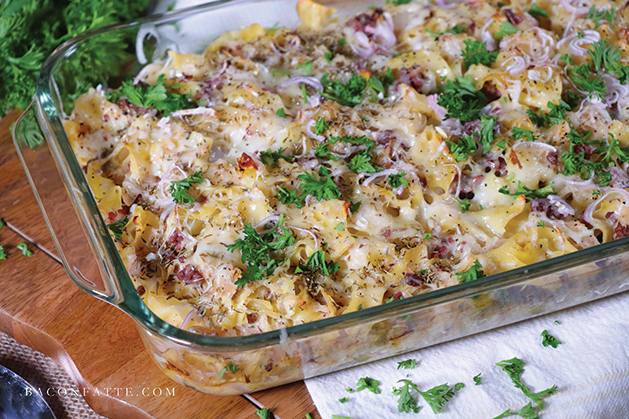
- 12 oz. wide egg noodles, uncooked
- 1½ lbs. lean ground beef
- 1 large yellow onion, chopped (about 1½ cups)
- 2, 10¾ oz. cans cream of chicken soup
- 2-3 cups Swiss cheese, freshly shredded (8–12 oz.)
- 32 oz. sauerkraut, with juice
- 1 medium shallot, halved and thinly sliced (about ¼ cup)
- 1 tsp. dried thyme, divided
- ¼ cup fresh parsley (curly or flat leaf), roughly chopped for garish
- salt and freshly ground black pepper, to taste
Pre-heat the oven to 350°F. Cook the noodles per package directions. When cooked, drain the noodles. Heat a large skillet over medium heat. Add ground beef and chopped onion, and cook 8 to 10 minutes until the beef is brown. Stir often. Season with salt and pepper to taste. (NOTE: For the best flavor, it’s important to season the beef at this stage.) Drain any excess fat from the pan. In a large mixing bowl, add cream of chicken soup, half of the shredded Swiss cheese, half of the dried thyme and the undrained sauerkraut, and stir to combine. Add the noodles and ground beef, and stir again to combine. Taste, and season mixture if needed. Spoon the mixture into an ungreased 3-quart casserole dish, and bake (uncovered) for 30-40 minutes. Carefully, remove the hotdish from the oven, and add remaining Swiss cheese, sliced shallots and remaining dried thyme over the top. Bake (uncovered) for an additional 10 minutes until the cheese topping is completely melted. Garnish with roughly-chopped fresh parsley, and serve warm.
Beer Bread
(halfbakedharvest.com)
This no-fail recipe pairs well with hearty soup, salad or entrées. It also makes a great slice of toast—with a generous swipe of soft butter! —Renée Stewart-Hester, editor
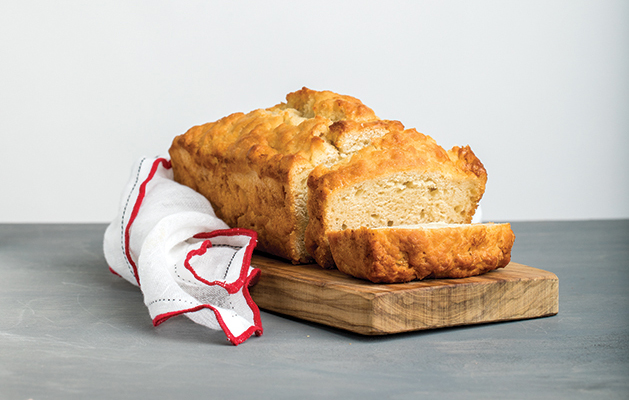
- 3 cups all-purpose flour (I use King Arthur.)
- 1 Tbsp. baking powder
- Kosher salt
- 12 oz. beer (Try Hamm’s, and Harp Lager works well, too.)
- ¼ cup honey
- 6 Tbsp. cold salted butter (sliced into 8 pieces)
Preheat the oven to 375 F. Grease a 9×5-inch loaf pan with butter. Add flour, baking powder and a pinch of salt to a mixing bowl. Pour in the beer, and add the honey. Mix until combined. Spoon the batter into the prepared pan. Arrange the butter slices on top of the dough. Place the pan on a rimmed baking sheet, and bake for 45-55 minutes or until the top of the bread is lightly browned.






